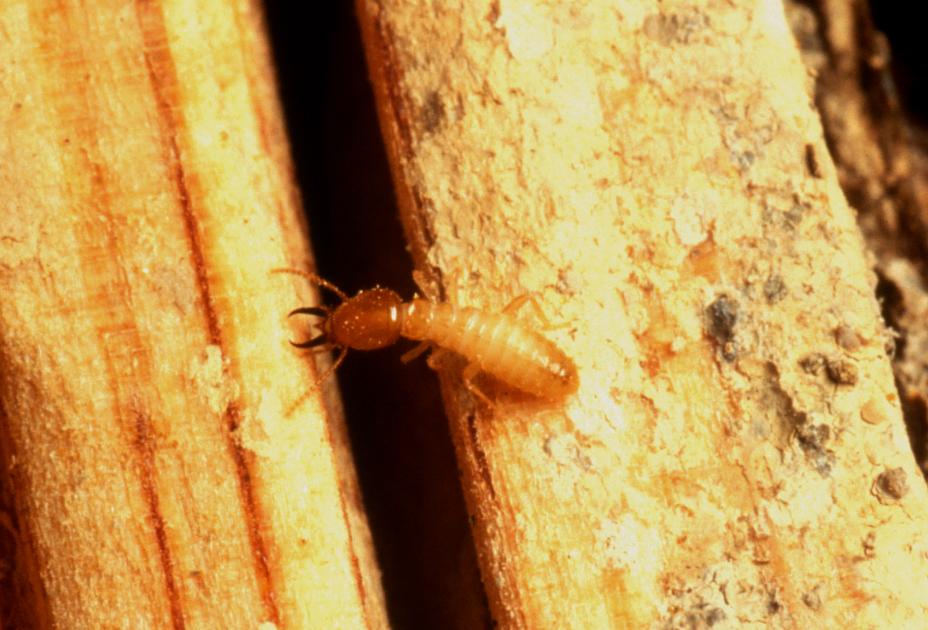Termites and Schools
On this page:
Basics

Photo Credit: Scott Bauer (USDA)
Termites are insects that eat wood, soil, dead leaves and sometimes paper. There are more than 4,000 types of termites. Termites are usually classified based on what they eat or where they live (above ground or below ground). Although they do not pose a health risk to humans, termites can cause thousands of dollars of damage to wooden structures and eat through books in classrooms.
Body Shape: Termites are sometimes confused with ants; they both have antennae, heads, thoraxes, abdomens, and some types have wings. Termites have bullet-shaped bodies, while ants have thin waists. Termites also have straight antennae; ants have curved antennae.
Behavior: Like ants, termites are social animals and live in colonies. Termite colonies exist within nests, which sometimes extend out into tubes. Both the colony nests and the tubes keep termites moist. Termites generally cannot exist in dry or exposed environments.
Life cycle: Termites exist as eggs, nymphs and then three types of adults:
- Workers.
- Soldiers.
- Queens/kings (reproducers).
Workers and soldiers are about 3/8ths of an inch in length; queens and kings are 1/2 inch long.
IPM Strategies
Teachers and school staff can support facilities managers by conducting quick classroom inspections and watching for signs of termites. Signs may include changes in wood such as:
- Swelling or bending.
- Spots that appear similar to water damage.
- Mazes or tubes within walls or furniture.
- The smell of mildew or mold.
If you observe any of these signs, work with your facilities management staff to contact a pest management professional to ensure that termite burrows do not cause dangerous structural damage to your school.
Read more:
- Termites: How to Identify and Control Them
- Pests of Homes, Structures, People and Pets: Termites Exit- the University of California IPM Online
- IPM for Termites Exit - General and identification information, monitoring techniques and chemical and nonchemical control methods.
- About integrated pest management.
